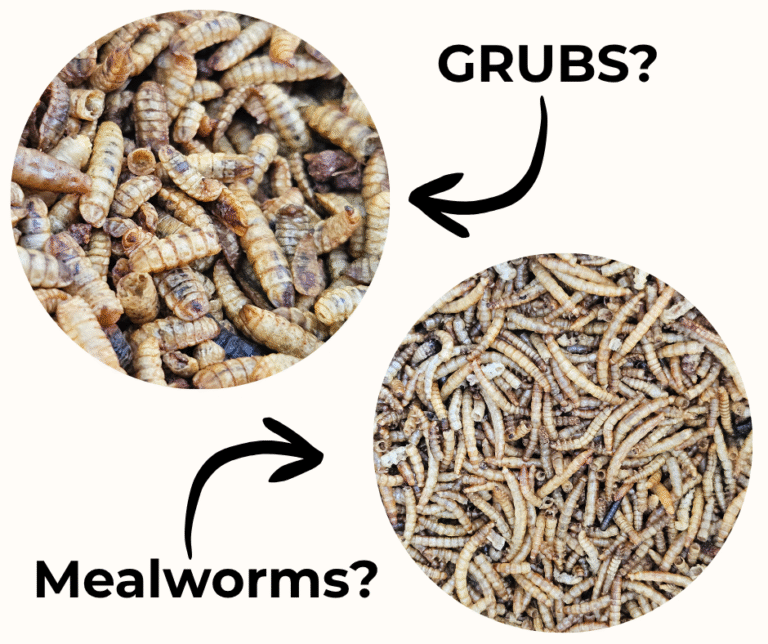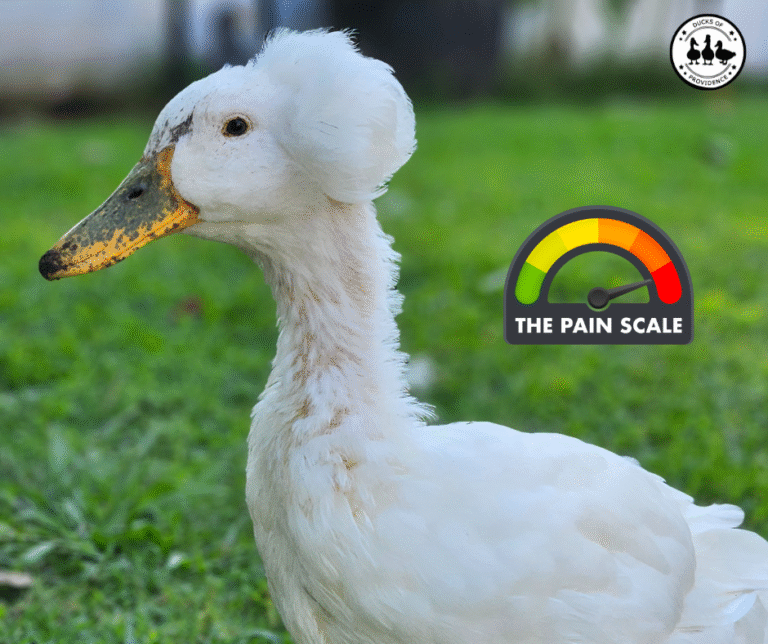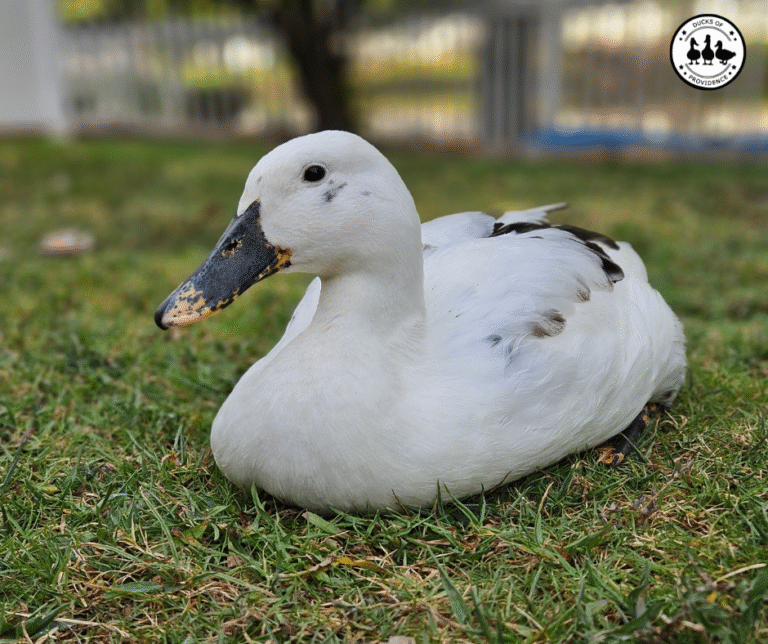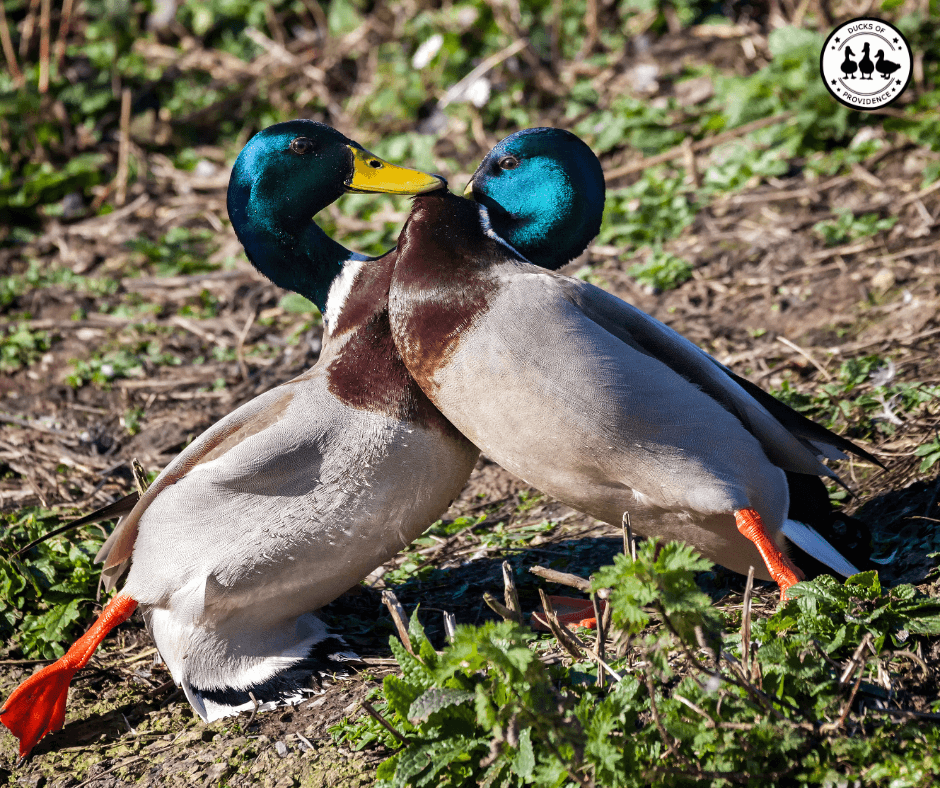
How to Handle Aggressive Drakes: Expert Tips for a Peaceful Flock
Drakes can be charming, funny, and full of personality—but sometimes, they can also be aggressive. If your drake is picking fights, harassing hens, or even chasing you, you’re not alone. Aggressive drakes are common, but they can usually be managed with the right approach. Let’s dive into why drakes become aggressive and how to handle them.
Ducks of Providence is free, thanks to reader support! Ads and affiliate links help us cover costs—if you shop through our links, we may earn a small commission at no extra cost to you. Thanks for helping keep our content free and our ducks happy! 🦆 Learn more
Why Do Drakes Become Aggressive?
Drake aggression can be puzzling, especially if your normally sweet boy suddenly turns into a bossy, chase-happy troublemaker. But don’t worry—it’s not personal! Aggressive behavior in drakes is typically driven by hormones, environment, and flock dynamics. Understanding the root cause is the first step to managing it effectively.
1. Hormones & Mating Season
📌 Drakes experience a surge in testosterone during spring and summer. This natural boost in hormones can make them territorial, pushy, and overly eager to mate.
Spring and summer bring a surge in testosterone for drakes, making them more territorial and, at times, downright pushy. This hormonal spike is nature’s way of preparing them for mating, but it can also cause them to challenge other ducks (and sometimes even their human caretakers). You may notice behaviors like:
- Chasing: Drakes may run after ducks, other pets, or even people in an attempt to assert dominance.
- Head bobbing & wing flapping: These displays are meant to impress females but can also serve as warnings to rivals.
- Over-mating: A hormonal drake may relentlessly pursue one or more hens, which can lead to stress and feather loss in the females.
- Biting or nipping: If a drake feels challenged, he may use his bill to grab, tug, or pinch—especially around feeding time or when defending his space.
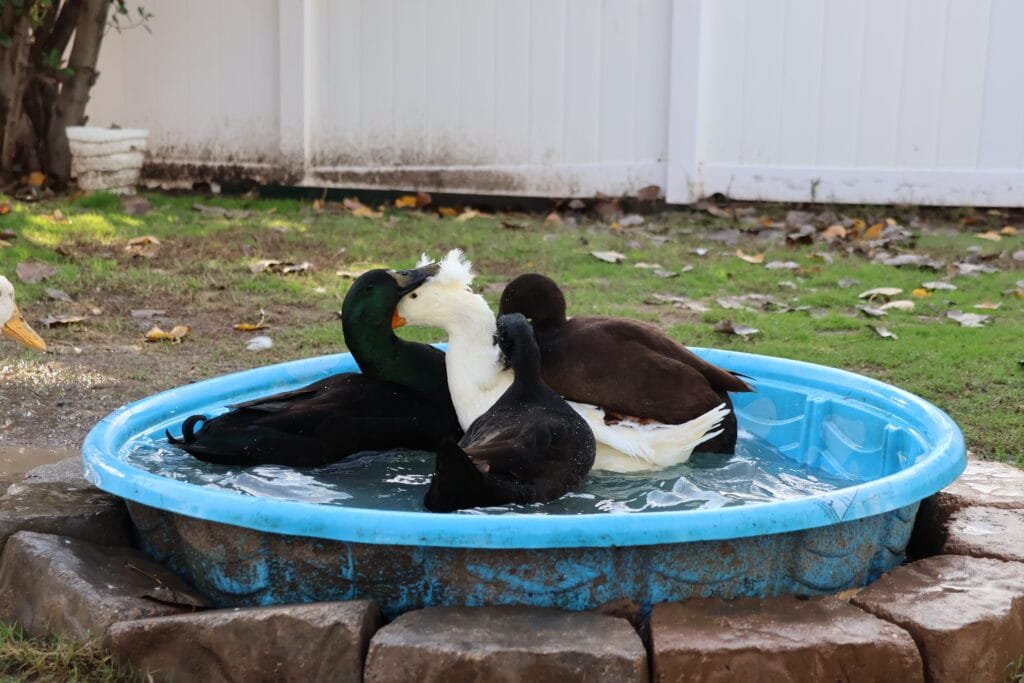
While this behavior is completely natural, it’s important to monitor it to ensure the safety of your flock. If things get too intense, there are ways to manage the situation, such as separating aggressive drakes, adjusting the male-to-female ratio, or even considering hormonal implants in extreme cases.
2. Overcrowding
📌 Too many ducks in a small space can cause tension. Drakes may become aggressive when they feel they need to compete for resources or personal space.
Space is a big deal for ducks, and when there isn’t enough of it, tensions can rise quickly. Drakes, in particular, may become more aggressive when they feel the need to compete for food, water, shelter, or even the best spot in the pond. Overcrowding can also make it harder for lower-ranking ducks to escape from a dominant or aggressive drake, leading to ongoing stress and frequent squabbles.
Some signs that overcrowding might be fueling aggression include:
- Frequent chasing and pecking: Drakes may become territorial, especially around food or nesting areas.
- Feather pulling and mounting: If there aren’t enough females or space to spread out, drakes may excessively chase or over-mate certain hens.
- Noisy disputes: Ducks are normally chatty, but excessive quacking, honking, or distressed calls can indicate conflict due to limited space.
- Boredom-induced aggression: With nowhere to explore or forage, drakes may start picking fights out of frustration.

How to Reduce Aggression Caused by Overcrowding
- Provide adequate space: Each duck should have at least 4-6 square feet in their coop and at least 16 square feet per duck in their run. More space is always better!
- Increase enrichment: Adding multiple feeding and water stations, hiding spots, and visual barriers (like plants or fencing sections) can help reduce competition and tension.
- Adjust the flock ratio: Keeping at least 3–5 females per drake can help minimize aggressive mating behaviors. If space is limited, consider separating multiple drakes into their own bachelor flock.
3. Too Few Hens
📌 If a drake doesn’t have enough females to pair with, he may become frustrated and overly dominant. Ideally, the ratio should be one drake per 3-5 hens to prevent excessive mating and aggression.
A frustrated drake is often an aggressive drake. If he doesn’t have enough females to spread his attention across, he may become overly dominant, chasing, mounting, and even injuring his chosen hen. In the wild, drakes naturally compete for mates, but in a confined setting, a lack of options can make things worse.
Signs your drake is frustrated due to a lack of hens:
- Over-mating: One or two hens may be singled out and excessively mounted, leading to missing feathers, stress, and even injuries.
- Increased chasing: A drake with limited mates may become relentless in his pursuit, leaving hens with little time to rest or eat.
- Aggression toward other drakes: If multiple males are present and there aren’t enough hens, fights may break out as they compete for the limited females. Exceptions to this are bachelor flocks. We will talk about this later.
Solution: The ideal ratio is one drake per 3–5 hens to prevent excessive mating behaviors. If you have too many drakes, consider separating them into a bachelor flock, where they can coexist without the stress of competition.
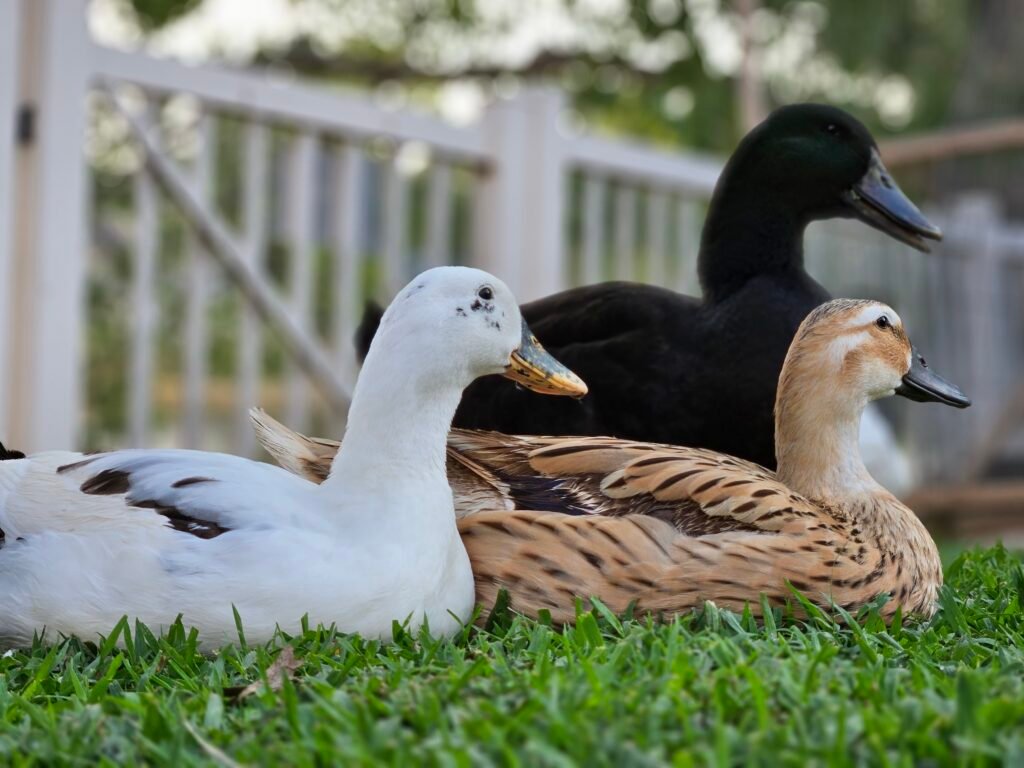
4. Lack of Stimulation
📌 Ducks need space to forage, swim, and explore. A bored drake with too much energy may start picking fights out of frustration.
Ducks are naturally curious and active, and when they don’t have enough space or mental stimulation, they can become restless—and that energy often gets directed into aggression. A bored drake may pick fights, over-mate hens, or chase anything that moves just to burn off excess energy.
Signs of boredom-related aggression:
- Pecking at other ducks for no apparent reason.
- Overly persistent chasing of hens, people, or even other pets.
- Nipping or biting out of frustration.
Ways to prevent boredom and frustration:
- Provide plenty of space: At least 16 square feet per duck in the run and even more if possible.
- Offer enrichment: Ducks love treat-dispensing toys, snuffle mats, pet pools, piles of leaves or straw to dig through, and live insects like mealworms for foraging fun.
- Give them a pond or kiddie pool: Swimming helps them expend energy and keeps them engaged.
- Create hiding spots: If hens are being harassed, small bushes, wooden crates, or fencing sections can give them a place to escape.
A mentally stimulated drake is a calmer drake!

5. Breed & Personality
📌 Some breeds, like Pekins and Muscovies, are naturally more dominant. Individual personality also plays a role—some drakes are simply more aggressive than others.
Just like people, some drakes are naturally more dominant or aggressive than others. While proper flock management helps curb bad behavior, some breeds are simply more assertive than others.
Breeds known for being dominant:
- Pekins – These large, confident ducks often take charge in a mixed flock.
- Muscovies – Unlike other domestic ducks, Muscovies don’t quack and have a unique way of communicating—but their drakes can be territorial and sometimes aggressive.
- Mallards & Call Ducks – Though small, these breeds can still be feisty, especially during mating season.
Meanwhile, some breeds, like Swedish, Welsh Harlequins, and Cayugas, are generally more docile. However, individual personality matters more than breed—some drakes are naturally mellow, while others are little firecrackers no matter their lineage!
If a drake remains aggressive despite proper management, consider separating him from the flock temporarily, rehoming him, or using hormone implants as a last resort.
6. Showing Dominance & Establishing the Pecking Order
📌 Drakes assert dominance to maintain the pecking order, using behaviors like pecking, chasing, and chest bumping. While normal, excessive aggression may require intervention.
Ducks, like chickens, have a pecking order—a social hierarchy that determines who gets first dibs on food, the best sleeping spots, and even who gets to mate. Drakes, being the males of the flock, often feel the need to assert dominance to maintain their place in this hierarchy.
Common dominance behaviors include:
- Neck biting & pecking – A dominant drake may nip at others to establish control.
- Chest bumping – Ducks will face off and push against each other to settle disputes.
- Chasing lower-ranking ducks – A drake may push another duck away from food or water.
- Wing flapping & vocal displays – Puffing up, flapping wings, or making loud grunts and hisses are ways to show strength.
Most of the time, these behaviors are normal and help maintain order in the flock. However, if a drake injures other ducks or repeatedly targets the same individual, intervention may be needed. Separating the drake for a short period or adjusting flock dynamics can help restore balance.
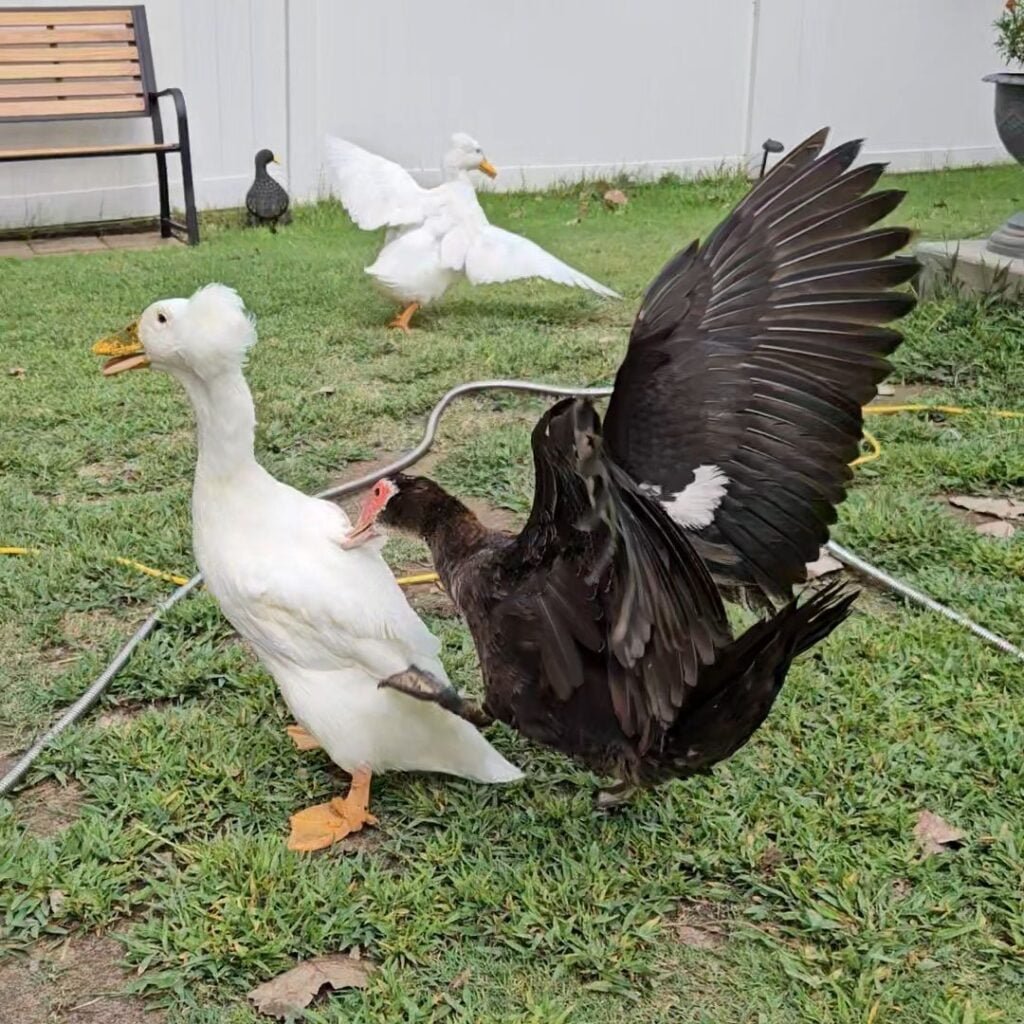
How to Manage an Aggressive Drake
The good news? You don’t have to put up with bad behavior! Here are expert-approved ways to calm an aggressive drake and restore peace to your flock.
✔ Separate the Drake (a.k.a. “Drake Jail”)
📌 If he’s harassing hens or other drakes, try giving him his own space for a while. Sometimes, a short “time-out” can reset his behavior.
If a drake is relentlessly harassing hens or fighting with other males, giving him his own space for a while can help reset his behavior. This temporary separation, often called “drake jail,” allows the flock to relax while the aggressive drake cools off.
How to implement a time-out effectively:
- Use a separate enclosure – A small, secure pen within view of the flock works best. This keeps him from feeling completely isolated while preventing further aggression.
- Limit the time – A few days to a week is usually enough. If he remains aggressive after reintroduction, a longer separation or permanent changes may be needed.
- Provide enrichment – Even in drake jail, he should have food, water, and activities like a small pool or forage to keep him occupied.
- Reintroduce carefully – When bringing the drake back, monitor his behavior closely. Watch for any signs of aggression, and be prepared to separate him again if needed.
Some drakes calm down after a brief separation, but if the aggression continues, other management strategies—like adjusting flock dynamics or rehoming—may be necessary.
Setting Up a “Drake Jail”
A temporary separation area, or “drake jail,” can help manage overly aggressive drakes. We love foldable metal playpens because they are incredibly versatile—you can use them freestanding, inside their normal pen, or even connect multiple for a larger space. For indoor time, we sometimes use foldable fabric playpens, which provide more space than a standard pet crate. This setup is especially useful when bringing our drake, Simon, inside to cool off. A properly designed “drake jail” ensures a safe, controlled time-out without isolation.
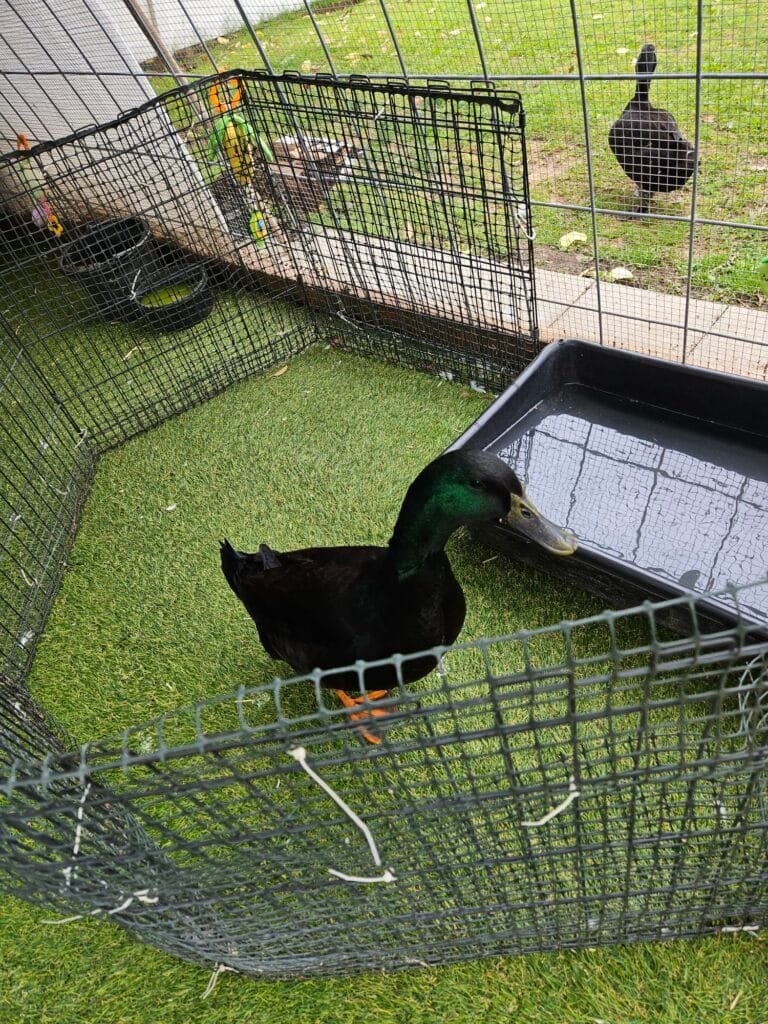
✔ Adjust the Flock Size
📌 Adding more hens can help balance out the drake’s energy and prevent him from fixating on one or two females.
If a drake is overly aggressive toward hens, he may not have enough females to balance his energy. Adding more hens can help distribute his attention and reduce stress on individual ducks. The ideal ratio is one drake per 3–5 hens to prevent excessive mating and aggression.
Things to consider when adding hens:
- Introduce new ducks gradually – Quarantine newcomers first and then introduce them slowly to avoid territorial disputes.
- Ensure enough space – More ducks mean more room is needed to prevent overcrowding.
- Monitor flock dynamics – Even with more hens, some drakes may still be pushy. Watch interactions and be ready to intervene if needed.
A well-balanced flock helps create a calmer, happier environment for both hens and drakes.
✔ Consider Bachelor Flocks
📌 Creating a bachelor flock by keeping drakes with other males and away from females can reduce aggression and competition, leading to a calmer environment.
Another effective strategy to manage an overly aggressive drake is to create a bachelor flock. Male ducks often become much calmer and less territorial when they are not competing for the attention of females. By separating the drake from the hens and pairing him with other males, you can reduce his stress and aggression.
Benefits of a bachelor flock:
- Less competition – Without females present, the drakes are less likely to fight over mating opportunities, leading to a more peaceful environment.
- Social dynamics – Male ducks will establish their own pecking order, which is usually less intense than when they’re trying to impress females.
- Stress reduction – Without the pressure of mating season, the drakes tend to be less aggressive and more content.
If you have the space, a bachelor flock can be a great solution for managing aggression, especially if you have multiple drakes that aren’t getting along with the hens. There are some great examples of successful bachelor flocks, like @quackingrunners or @dean.crowley.marv.pj.zeke.
✔ Provide More Enrichment
📌 Make sure your ducks have plenty of things to do. Foraging, swimming, and exploring new areas can help redirect a drake’s energy in a positive way.
To prevent a drake from becoming overly aggressive, it’s important to keep him mentally and physically stimulated. Ducks, like all animals, thrive when they have opportunities to engage in natural behaviors such as foraging, swimming, and exploring. Providing enrichment not only helps redirect a drake’s energy but also reduces boredom, which can lead to frustration and aggression.
Types of enrichment activities:
- Foraging opportunities – Scatter food around the yard or hide it in different places to encourage natural foraging behaviors. You can use treats like mealworms, leafy greens, or even plant-based foods to keep them engaged.
- Water access – Swimming is a natural and calming activity for ducks. Offering access to pools, ponds, or small water troughs allows them to cool off and engage in playful behavior, which can reduce stress.
- Exploring new areas – Ducks are curious creatures and enjoy exploring different environments. Rotating their grazing areas or setting up new paths with obstacles or varied terrain encourages mental stimulation and physical exercise.
- Toys and puzzles – Duck-safe toys or puzzles can also provide enrichment, such as treat-dispensing toys or snuffle mats that encourage play.

By creating an environment where drakes can express themselves naturally, you help reduce their excess energy and aggression, fostering a more peaceful flock.
✔ Watch for Injuries
📌 If aggression leads to feather loss, limping, or open wounds, take action immediately. In severe cases, the best solution may be permanent separation.
Aggressive behavior in drakes can sometimes lead to physical injuries, such as feather loss, limping, or open wounds. If you notice any of these signs, it’s crucial to take action right away to prevent further harm. Injuries can escalate quickly if left unaddressed, and they can lead to infections or long-term health issues.
What to watch for:
- Feather loss or bald spots – Excessive pecking or chasing can cause drakes to lose feathers, particularly around the neck or back.
- Limping or signs of injury – If a duck is limping, it may have been injured during a fight or rough handling.
- Open wounds or cuts – These can occur during aggressive interactions and should be treated immediately to prevent infection.
If injuries are severe or persistent, permanent separation may be the best solution to ensure the safety of the injured duck and the rest of the flock. Regular monitoring and prompt intervention are key to keeping your flock healthy and happy.
✔ Permanent Separation
In some cases, if a drake’s aggression continues despite all efforts to manage his behavior, permanent separation may be necessary. This means keeping him completely separate from the rest of the flock for the long term, which can ensure the safety of other ducks.
When to consider permanent separation:
- Ongoing aggressive behavior – If a drake repeatedly harms others, despite time-outs and adjustments, it may be time to permanently separate him.
- Severe injuries – If aggressive interactions have led to significant injuries that are not healing or are causing ongoing stress, permanent separation can help protect the rest of the flock.
- Poor flock dynamics – If the drake’s presence is consistently causing unrest and disrupting the harmony of the flock, it may be best to give him a permanent space of his own.
In these situations, the drake can still have a fulfilling life with proper care, but without the risk of further aggression or injury to the other ducks.
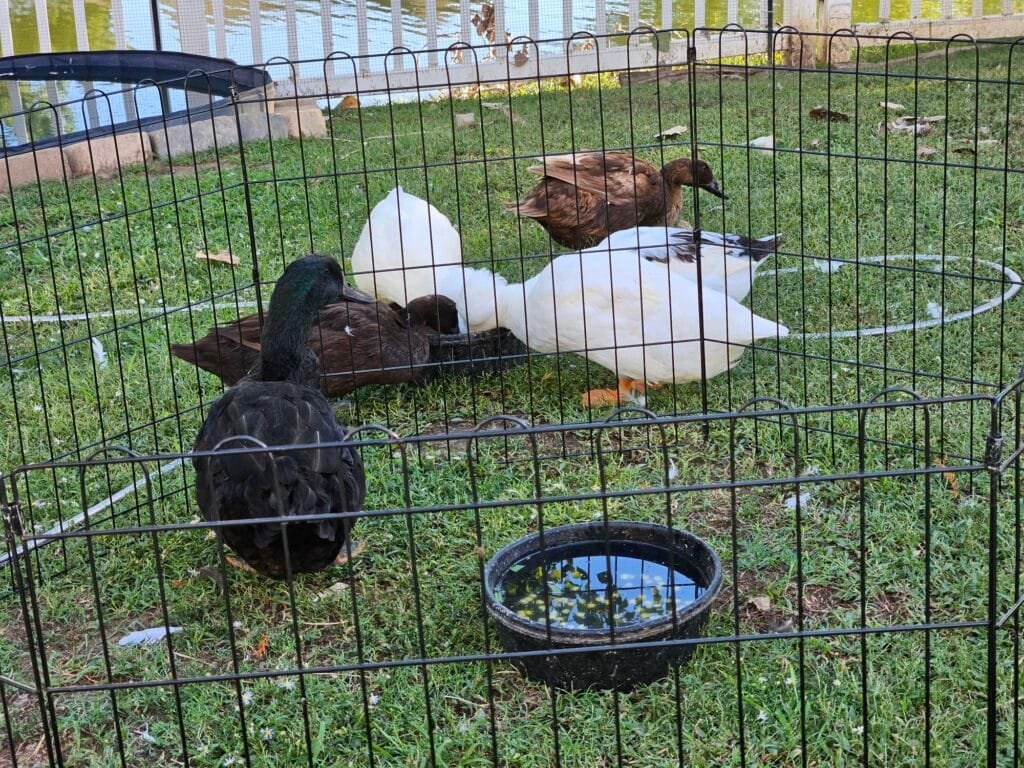
✔ Rehoming
If permanent separation isn’t viable or the drake’s behavior is beyond what can be managed, rehoming him to a different environment or flock may be the most humane solution. Finding a new home allows the drake to live peacefully without causing harm to other ducks, while giving the flock a safer, more balanced dynamic.
Considerations for rehoming:
- Find a suitable home – Look for a place where the drake will be cared for appropriately and where his aggressive tendencies can be managed. This could be another farm or duck keeper with experience.
- Flock compatibility – Make sure the new environment has enough space and other ducks to prevent future aggression. If possible, rehome him to a flock with fewer females or another bachelor flock.
- Keep his welfare in mind – Ensure the new home will provide the drake with the same level of care and attention, including space, food, and enrichment.
Rehoming is often a last resort, but it can offer a fresh start for a drake that’s not thriving in your current flock.
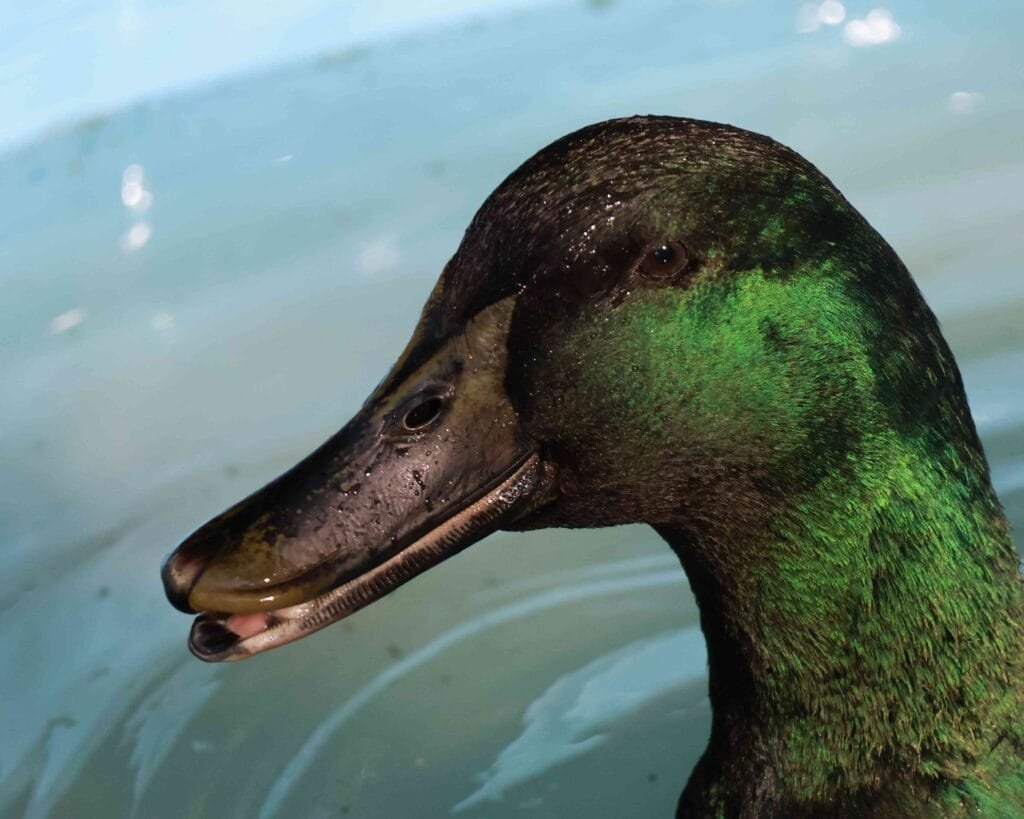
When the Drake Is Aggressive Toward You
Occasionally, a drake’s aggression can be directed toward you, the owner, rather than other ducks. This can be particularly concerning, as it can lead to bites, nips, or a more aggressive stance that might make you feel threatened. When this happens, it’s important to address the behavior immediately to maintain both your safety and the overall well-being of the flock.
When a drake shows aggression toward you, it’s often linked to dominance or mating instincts. Drakes may try to assert control by attacking if they view you as a subordinate or are frustrated by a lack of hens.
To manage this behavior, assert your dominance calmly—gently pinning him down, mimicking natural duck behaviors. Carrying the drake under your arm or using a broom to block attacks can help maintain authority without harm. Consistency is key, as reinforcing calm behaviors over time will foster a respectful relationship. If the aggression persists, consider separation or rehoming.
Managing Drake Aggression Toward You
- Establish Dominance – If the drake attacks, gently pin him down until he stops struggling, mimicking how ducks assert hierarchy. Never back away, as it reinforces his dominance.
- Discourage Pecking – Lightly tap him back with your finger to signal authority.
- Carry Him – Holding him under your arm puts him in a submissive position.
- Use Deterrents – A broom, PVC pipe, or water gun can create a barrier without harm.
- Stay Calm & Assertive – Stand tall, use a firm voice, and avoid showing fear.
- Avoid Physical Confrontation – Don’t fight or chase; instead, gently push him away with an object to set boundaries.
- Use Barriers for Safety – When feeding or cleaning, create separation to prevent attacks.
- Be Consistent – Always respond the same way to reinforce that aggression won’t be tolerated.
- Provide Positive Reinforcement – Reward calm behavior with treats or praise to encourage good habits.
If the aggression continues despite your efforts, it may indicate a deeper issue that needs to be addressed, such as hormonal imbalances or overcrowding. In extreme cases, permanent separation or rehoming might become necessary, especially if the drake becomes a danger to you or others.

Duck Kisses: Affection or Dominance?
Ducks often nibble on their owners, which is sometimes referred to as “duck kisses.” This can be a sign of affection, curiosity, or bonding, especially if the nibbling is gentle and playful. However, if the nibbling becomes firm or insistent, it may be a sign of dominance rather than affection.
- Affectionate Nibbles – Light, playful, and usually accompanied by relaxed body language.
- Dominance Nibbles – More forceful, persistent, and sometimes accompanied by hissing or posturing.
It’s important to discourage dominant nibbling by not reacting positively to it. Instead, redirect the behavior with training or gentle correction to reinforce respectful interactions.
Can an Aggressive Drake Ever Be Fixed?
Every drake is different, and while some will calm down with adjustments, others may always have an aggressive streak. If you’ve tried everything and your drake continues to be a danger to other ducks (or you!), it may be time to consider rehoming him to a flock with no hens or another setup that better suits his personality.
Aggression doesn’t have to take over your flock! With patience, the right environment, and a few expert tricks, you can help your drake settle down and enjoy a peaceful life with the rest of your ducks.
Do you have a drake giving you trouble? Share your experience in the comments!
Related Articles
🦆 Aggressive Ducks: How do I stop my ducks from fighting?
🦆 The Untold Truth About Mating Ducks: From Passion to Overmating
🦆 Introducing New Ducks: How to Expand Your Flock Without Drama
🦆 How To Get A Duck to Trust You?

